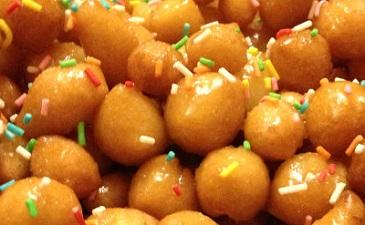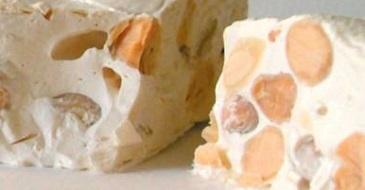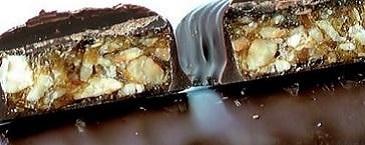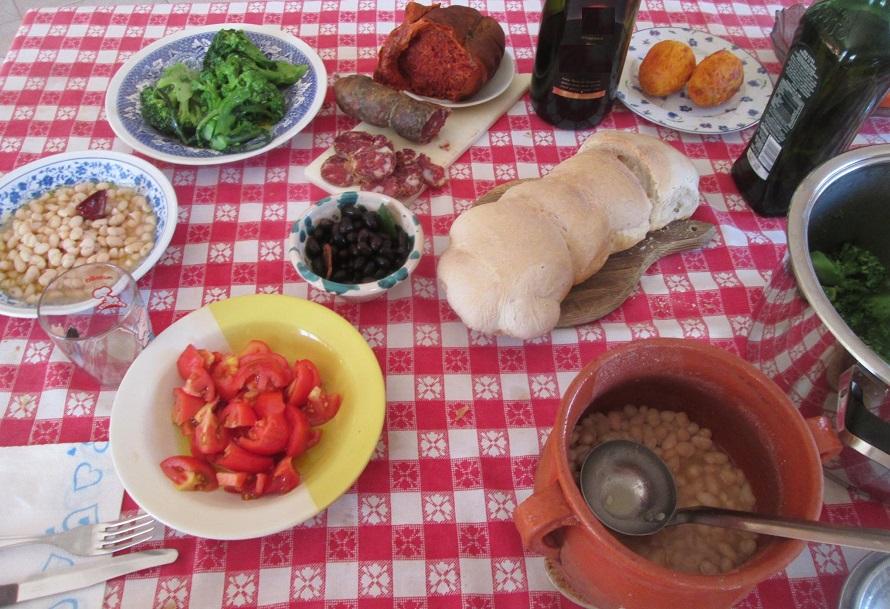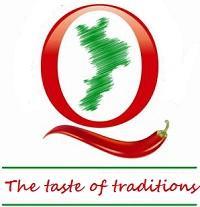 Calabrian cooking strikes a beautiful balance between meat-based dishes, featuring pork, ovine (lambs, kid, and so on) vegetables, especially eggplant, and fish, all flavored with richly fragrant mountain herbs. Calabrian cooking strikes a beautiful balance between meat-based dishes, featuring pork, ovine (lambs, kid, and so on) vegetables, especially eggplant, and fish, all flavored with richly fragrant mountain herbs.
With respect to the inhabitants of some other Italian regions, Calabrians have traditionally placed a greater emphasis on preserving their foods, in part because the heat and dryness of the mountains inland make crop failure a distinct possibility, people plan ahead, packing vegetables and meats in oil, preparing cold cuts, and, along the coast, curing fish as well, especially swordfish.
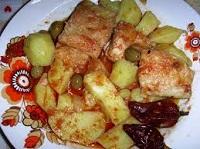 Traditional to Calabria is stockfish, (stoccofisso) which in some areas acquires a particular flavor. Traditional to Calabria is stockfish, (stoccofisso) which in some areas acquires a particular flavor.
Stockfish can be cooked in many ways, but traditionally it is roasted, fried, or alla molinara with tomato, potatoes and cappers.
The most known is the 'stocco di Mammola', a mountain village in the Aspromonte where the fish is cured in fresh spring water. (Dried codfish (stoccofisso) not to be confused with what we call 'baccala' which is salted.)
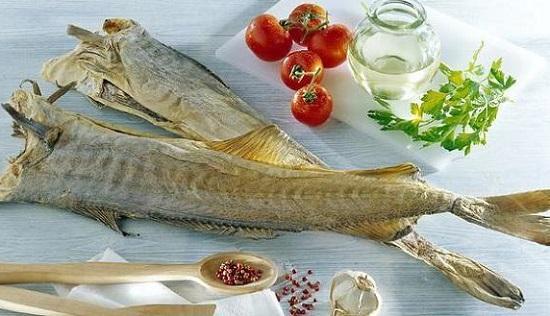
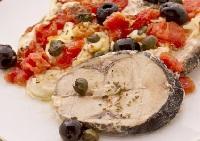 An interesting white meat dish at Altomonte is roast cockerel; a classic fish dish is swordfish harpooned in the spring off the Violet Coast between Villa San Giovanni and Palmi. Traditionally, it is roasted in a pickle sauce or served alla marinara with tomato and parsley or alla pizzaiola. An interesting white meat dish at Altomonte is roast cockerel; a classic fish dish is swordfish harpooned in the spring off the Violet Coast between Villa San Giovanni and Palmi. Traditionally, it is roasted in a pickle sauce or served alla marinara with tomato and parsley or alla pizzaiola.
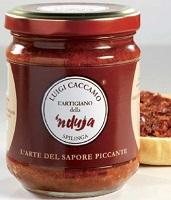 The fiery pork paste from Calabria: The famous 'Nduja is a spicy, spread able pork sausage typically made with parts of the pig such as the shoulder, belly and jowl, as well as tripe, roasted peppers and a mixture of spices. The fiery pork paste from Calabria: The famous 'Nduja is a spicy, spread able pork sausage typically made with parts of the pig such as the shoulder, belly and jowl, as well as tripe, roasted peppers and a mixture of spices.
It is a Calabrian variation of salami, loosely based on the French 'andouille' (hence the name) introduced in the 13th century by the Angevins. It is mainly served with slices of bread or with ripe cheese. Its unique taste makes it suitable for a variety of dishes. For example, it can be added to pasta sauces...or on a pizza. It originates from the small town of Spilinga in the province of Vibo Valentia.
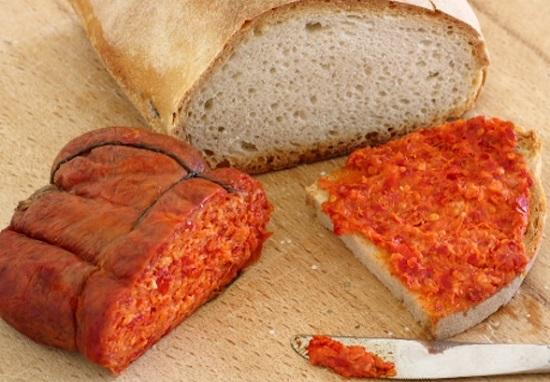
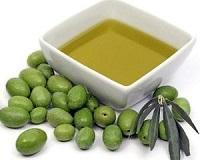 Calabria cooking has become immensely popular. In addition, a lot of indirect publicity has been provided on an international scale by dietologist who with the Americans to the fore, have discovered that Mediterranean cooking and particularly Calabrian, is one of the healthiest. Calabria cooking has become immensely popular. In addition, a lot of indirect publicity has been provided on an international scale by dietologist who with the Americans to the fore, have discovered that Mediterranean cooking and particularly Calabrian, is one of the healthiest.
Olive oil is now seen highly nutritious, good for the arteries and withstanding change at high temperatures .
 The small red peppers turns out to be a vasodilator and whole meal bread is good for the stomach. Calabrian cooking is healthy, simple and plain. The small red peppers turns out to be a vasodilator and whole meal bread is good for the stomach. Calabrian cooking is healthy, simple and plain.
Nevertheless, imagination and necessity in a people often isolated for long periods, have supplemented this simplicity with inventiveness in food preparation.
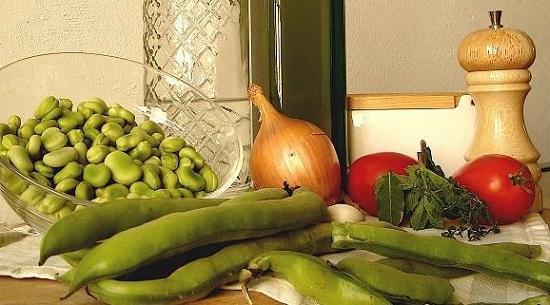
The maccaruni e casa is common; this homemade pasta is rolled round bits of wire or sticks (in Greek Calabria, these are called cannici). In the province of Vibo Valentia, this kind of pasta is known as fileia. It is always served with a meat sauce, made of well-cooked pork, often mixed with veal and goat meat ( Calabria Grecanica , Reggio di Calabria).
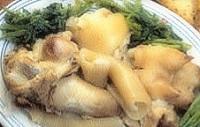 The so called small meats, lamb, kid and goat, are renowned , and a well known dish is capra alla bovese (Vutana); goat meat boiled with herbs is popular, as is roast kid, eaten throughout the entire region. The so called small meats, lamb, kid and goat, are renowned , and a well known dish is capra alla bovese (Vutana); goat meat boiled with herbs is popular, as is roast kid, eaten throughout the entire region.
Pork is an important ingredient, and a popular dish is the frittula, hot pig's skin eaten with warm bread.
Frittole is prepared by cooking pork rind, pork meat and other less noble parts of the pig (part of the neck, cheek, tongue, nose, ears, kidneys, etc.) with pork fat (for taste).
It is cooked slowly in the "caddàra", the traditional tinned copper pot.
The city of Catanzaro is well known for its "morzeddu" or morsello, its own specialty, made of tripe, cow's heart and lungs, well seasoned with herbs and spices also served in a pitta (round bread with the hole).
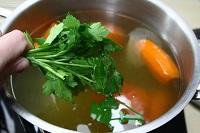 Another popular dish is vegetable soup, or pasta and vegetable soup, pasta and beans, pasta and broccoli, pasta and brodo beans, polenta and cabbage, rice and endive, pasta and peas. Another popular dish is vegetable soup, or pasta and vegetable soup, pasta and beans, pasta and broccoli, pasta and brodo beans, polenta and cabbage, rice and endive, pasta and peas.
The basic of each dish is olive oil, with home-made tomato sauce, pork fat, pressed salted aubergines and salami. Aubergines are a basic ingredient of Calabrian cooking.
Every bit of this amazing vegetable is used, including the skin, with excellent results.
Often served as a main course, such as melanzane alla parmiggiana, baked and seasoned with oil, parsley, salt and cheese.
Other recipes include caponata, stuffed, fried with anchovies, or roasted with peppers.
Spreads - Pate' : Calabrese cooking is famous for the deliciousness of its first courses, often seasoned with extra-virgin olive oil.
Among the numerous seasonings and sauces a special place is occupied by creams or patés, obtained from some of the most typical products of this land such as mushrooms.
One of them is the paté with delicate taste and aromatic fragrance obtained through the grinding of just-plucked carrots, another one is the paté of onions of Tropea, combined with oregano and vinegar, or the paté of aubergines
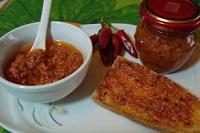 Piccantino (La bomba - The Bomb): Mushroom-based and very spicy fine sauce made of hot pepper, aubergines, olive oil, aromatic herbs, salt and vinegar. Piccantino (La bomba - The Bomb): Mushroom-based and very spicy fine sauce made of hot pepper, aubergines, olive oil, aromatic herbs, salt and vinegar.
Excellent is the cow's milk cheese made in very small quantities by the monks in Serra San Bruno, like the goat's milk cheeses from Aspromonte, made at Bova, Roccaforte del Greco, Staiti, Motta San Giovanni and Roghudi..
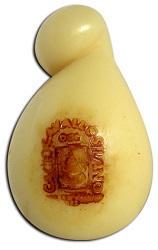 Connoisseurs consider the Calabrian goat's milk cheeses as one of the best. Connoisseurs consider the Calabrian goat's milk cheeses as one of the best.
Caciocavallo : When on the plateau of the Sila there was not yet the fixed stabling, the caciocavallo was produced exclusively in the period between spring and summer from cattle of the Podolica Breed, in the wooden huts cowherds, called vaccarizzi.
It is let mature for a month in a fresh airy room, where the shaped cheeses are hung in a couple "on horseback" of a horizontal pole. Seasoning goes on for 3 months up to one year in a cellar at constant temperature.
Butirro is a typical cheese generally made using the paste of caciocavallo or provola, which is then filled with butter.
It can be tasted during meals at table or on plain pasta, it gives a very sweet taste of milk enzymes.
The working of butirro takes place between spring and summer, when animals are lead to the mountain pastures.
The "spun" paste constituting the butter covering is obtained from the working whey of caciocavallo, scamorze, provole or mozzarella.
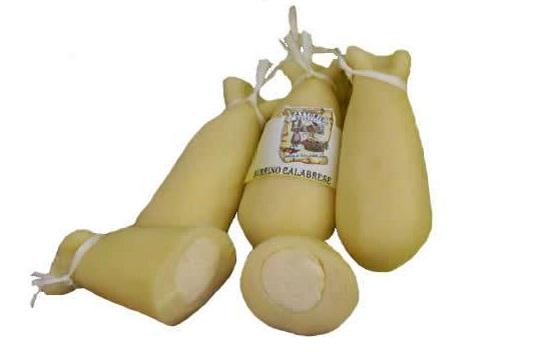
Their color is straw yellow and they do not need any seasoning.
They are often custom-made in order to set up gastronomic shows and their weight varies bet. 35 and 300 g.
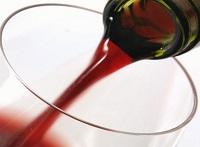 Wines - Calabria has a vast range of wines, and each part of the countryside seem to have its own. In antiquity, Calabria was known by the Greeks as Enotria (land of wine) with over a hundred varieties of wine. Some of the finest red wines come from Ciro. Wines - Calabria has a vast range of wines, and each part of the countryside seem to have its own. In antiquity, Calabria was known by the Greeks as Enotria (land of wine) with over a hundred varieties of wine. Some of the finest red wines come from Ciro.
Generally speaking, Calabrian red wines are better than the white, and such is their strength and body that they are widely used to " cut " a large number of Italian wines, including the renowned Barolo, as well as foreign.
The controlled origin wines ( DOC ) in Calabria are now Ciro' and Melissa (upper ionian Catanzaro), Lametia (Piana di Lamezia Terme), Savuto (along the Savuto river, Cosenza province), Donnici (upper Crati Valley, Cosenza province) Graco di Gerace (a white wine, Locri area) and Sant'Anna (Isola Capo Rizzuto).
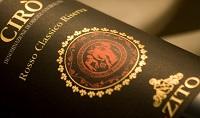 Apart from these wines, of which the world famous Ciro' is outstanding and described as the oldest wine on earth, many other deserve a mention, and though well known, have not been accorded the DOC recognition. Apart from these wines, of which the world famous Ciro' is outstanding and described as the oldest wine on earth, many other deserve a mention, and though well known, have not been accorded the DOC recognition.
These include Pellaro, originating a few miles south of Reggio Calabria, known for its robust quality, flavor and strength , Kalipea, made at Locri, golden in color; Limbadi (Catanzaro), a good table wine; Rossano , made in the area near the town, ruby colored with a high alcoholic content; Verbicaro (Cosenza), from the Lao river 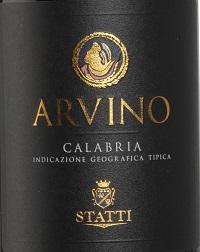 basin. A curiosity is the Trasfigurato wine from Seminara , kept in terracotta containers and smoked. basin. A curiosity is the Trasfigurato wine from Seminara , kept in terracotta containers and smoked.
There are 100's of other wines, all good, and the search for Calabrian wines can be a fascinating pastime for visitors wishing to get to know Calabria , not only for what it is but for what it has to offer.
Grazed by the winds of both seas, Calabria's olive groves also produce some of the Bel Paese's best olive oil.
The region is Italy's second biggest producer of the liquid gold after Puglia. 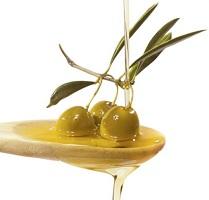
Bruzio olive oil produced in the province of Cosenza was first among the Calabrian extra virgin olive oil to obtain the DOP recognition by the European Union.
The name "Bruzio" retraces the ancient name of the corresponding part of Calabria, with the main center Cosentia, inhabited by Bruzi, ancient Italic tribes.
Olive Oils: Alto Crotonese PDO, Bruzio PDO, Lamezia PDO
Oil essences: Bergamotto di Reggio Calabria PDO
|
One of the dishes that sums up the Calabrian philosophy of food is caviale dei poveri, (sardella-rosa marina calabrese) poor people's caviar, made by packing herring roe in oil, and flavoring it with hot peppers (baby sardines).
A rich, frugal peasant tradition that combines simple ingredients to make lively, tasty foods.
In the Crotone (Crucoli) area, sardella is used minced and mixed with powdered red pepper and olive oil, spread on bread and eaten as an appetizer.
The 'red from Tropea'
Cipolla Rossa di Tropea Igp
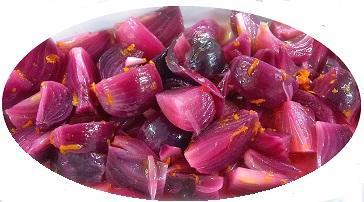
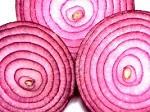 The red onion of Tropea has a history that dates back millennia. It was brought to Calabria during the era of the Phoenicians, as confirmed by some archeological findings in the area between Vibo Marina and Trainiti. Reference is made to the Egyptians who prohibited their priests from using the onion (because of its aphrodisiac properties). The red onion of Tropea has a history that dates back millennia. It was brought to Calabria during the era of the Phoenicians, as confirmed by some archeological findings in the area between Vibo Marina and Trainiti. Reference is made to the Egyptians who prohibited their priests from using the onion (because of its aphrodisiac properties).
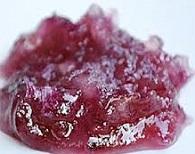 It was also highly appreciated during the middle ages and the Renaissance, when it was considered to be a primary source of nutrition, and was an object of barter in the local economy, sold and exported by sea to Tunisia, Algeria and Greece. It was also highly appreciated during the middle ages and the Renaissance, when it was considered to be a primary source of nutrition, and was an object of barter in the local economy, sold and exported by sea to Tunisia, Algeria and Greece.
Widespread onion growing goes back to the beginning of the 19th century, when, for the first time in the territory of Parghelia (VV) it was added to the crop rotation in the place of cotton.
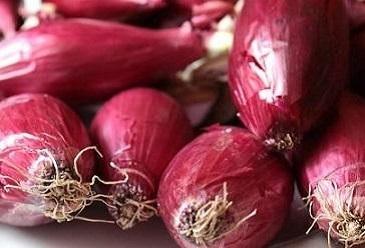
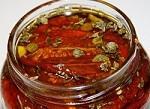 Dried tomatoes : Calabrese tomatoes, unique for their taste and color, are picked, dried and prepared according to a completely natural process, with no addition of preservatives. Dried tomatoes : Calabrese tomatoes, unique for their taste and color, are picked, dried and prepared according to a completely natural process, with no addition of preservatives.
Once dried, they are preserved in oil adding basil, anchovies and hot pepper.
Excellent as an appetizer or as a side dish for meats.
Wild mushrooms: Calabria is Italy's 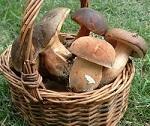 largest producer of wild mushrooms, well-known and appreciated since the Roman emperors. It is picked in the forests of Sila, Pollino, Aspromonte. largest producer of wild mushrooms, well-known and appreciated since the Roman emperors. It is picked in the forests of Sila, Pollino, Aspromonte.
It can be dried, preserved in oil, pickled, or served fresh, grilled, fried, or sliced in sauce and soups.
Small artichokes in olive oil and salt. An excellent solution for a mouth-watering appetizer.
Olives (generally green) are flattened and stoned adding oil, salt, white vinegar, garlic, hot peppers and fennel seeds.
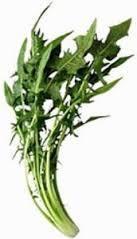 Wild chicory in oil - Country people have always been great eaters of herbs growing spontaneously in fields. Wild chicory in oil - Country people have always been great eaters of herbs growing spontaneously in fields.
Among the numerous varieties, wild chicory is today much consumed and preserved in oil for the desire to always have a provision left, including during the bad season.
Chicory, cleaned from tough leaves, is blanched in water and vinegar and then put into glass pots, covering tit with oil. 30-40 days later, it can be eaten.
Ideal as a side-dish, sautéed in the pan with vegetable, meats, fish or cheese.
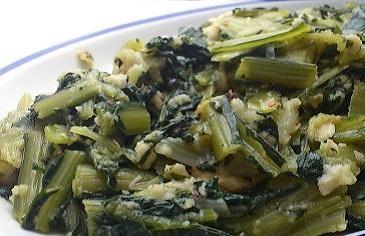
There is also a vast assortment of cakes and perhaps more than any other aspect of Calabria cookery, sweet things are most intimately linked with genuine local traditions, especially at Christmas and Easter.
This probably arises from the fact that, in a relatively poor economy, sweets and cakes are considered luxuries to be enjoyed only on great occasions.
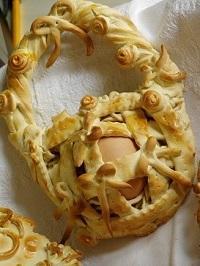 In almost the whole region at Easter the sgute or aggute , or cuddhuraci or cuzzupe are made in the shape of handbag with a handle. In almost the whole region at Easter the sgute or aggute , or cuddhuraci or cuzzupe are made in the shape of handbag with a handle.
One or more hard boiled eggs are inserted in the pastry and the top is decorated with symbols. Another traditional cake is the 'nacatula', once eaten at weddings, and also at Carnival time, fried in olive oil.
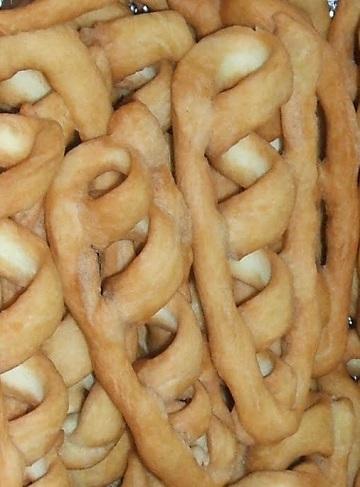
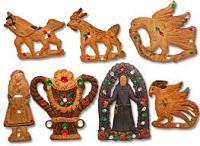 Calabrian's traditional sweets are often made using natural sweeteners such as honey, syrup of figs or mulled wine. Calabrian's traditional sweets are often made using natural sweeteners such as honey, syrup of figs or mulled wine.
The mostacciolo, made of flour, honey and almonds, is another genuinly traditional Calabrian sweet, found all over the region and of great importance for the local economy.Mostacciolo or nzuddo can still be bought at any fair and is displayed in the characteristic mustazzolari chest.
It is made in all shapes and is often a veritable haut relief, trimmed with tinfoil, and is still sometimes given in inland towns as a symbolic engagement or wedding present. The figures on it often recall pagan motives (babbaluti) or early Christian fish and bird symbols.
Petrali are made of fruit and belong to 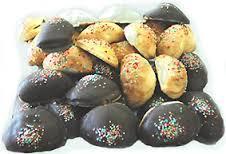 the tradition of the Greek areas of Calabria, though they are made with variations by Reggio di Calabria confectioners. the tradition of the Greek areas of Calabria, though they are made with variations by Reggio di Calabria confectioners.
Another typical cake is the pignolata, made of small balls of sweet pastry fried in olive oil and stuck together with honey, found in most of the region.
Torrone (nougat) is made at home but also industrially, and is thus of economic importance.
Traditionally a Christmas sweet, it is made of honey, sugar, almonds and chocolate.
Another renowned traditional pastry of greek origins is the pitta di san Martino (Pitta nchiusa) prepared with almonds, raisins, walnuts, pine nuts, dried figs, etc.. according to an ancient recipe and tradition.(Polistena pitta is particularly good).
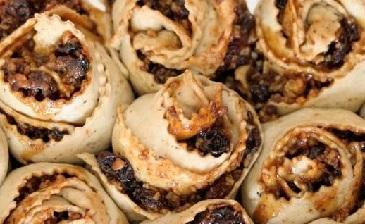
Other Calabresi sweets you
might want to know about
Turdiddri - Cannarìculi - Scaliddre - Ciciriati - Cuddhuraci - Cudduredda - Chiacchiere - Cupeta - Cuzzupe - Giuggiulèna - Nacatole - 'Ncinetti - Petrali - Pignolata - Pipareddhi - Pitta Mpigliata - Pitta San Martino - Stomatico - Susamelle - Tartine di sanguinaccio - Tartufo di Pizzo - Granita di cedro - Dita d'Apostuli - - Crema reggina - Pastiera - Torrone - Turruni ngelatu - Marzallette - Torrone Sorianesina - Anicini alle mandorle - Scirubetta - Chinulille - Pittapie - Curujj - Zippuli - Riganella - Jaluni - Crustuli - Nepitelle - Bocconotti - Cannariculi - Taralli calabresi - Pezzujate - Verchiglie alla monacale -
|

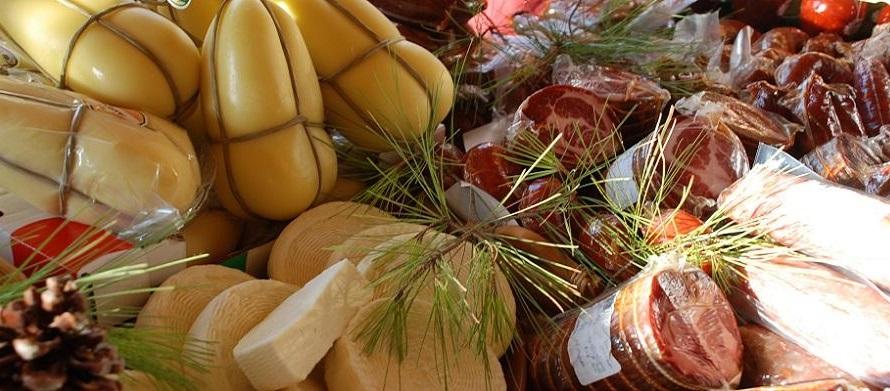

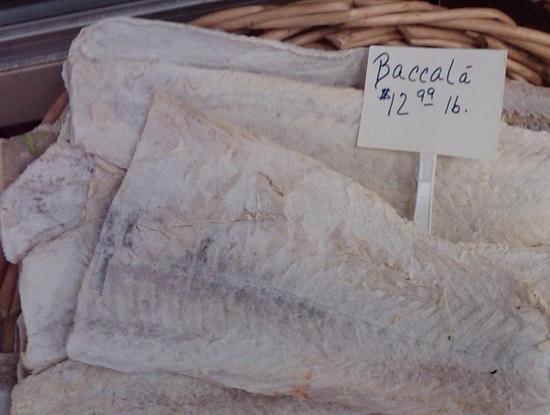



 The fiery pork paste from Calabria: The famous 'Nduja is a spicy, spread able pork sausage typically made with parts of the pig such as the shoulder, belly and jowl, as well as tripe, roasted peppers and a mixture of spices.
The fiery pork paste from Calabria: The famous 'Nduja is a spicy, spread able pork sausage typically made with parts of the pig such as the shoulder, belly and jowl, as well as tripe, roasted peppers and a mixture of spices.



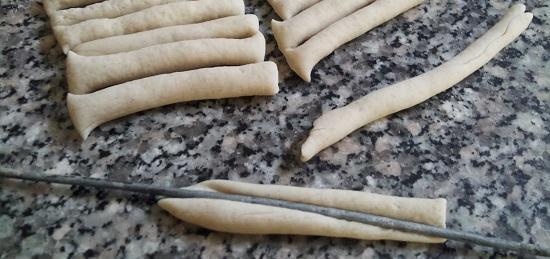

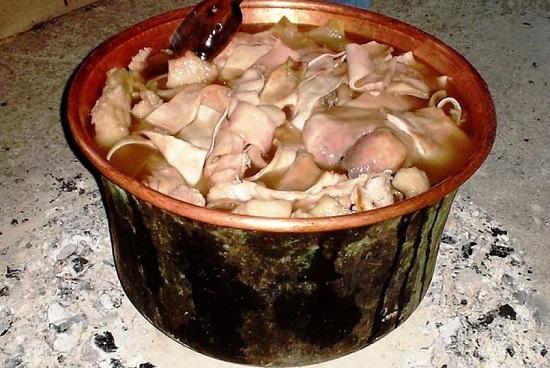
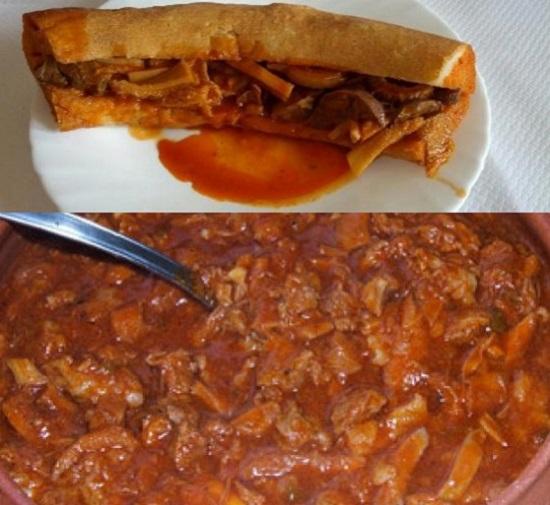

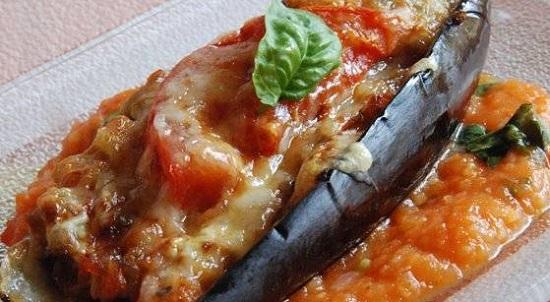
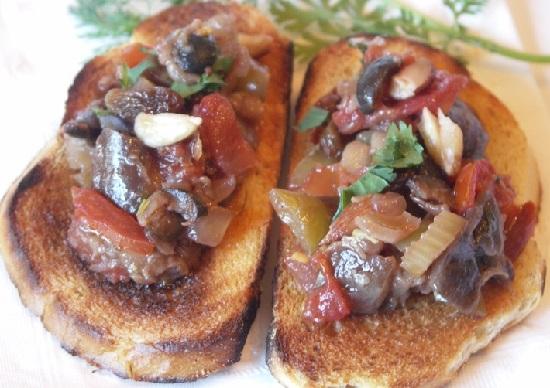
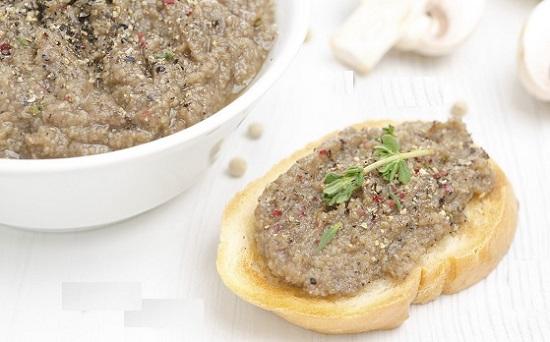

 Connoisseurs consider the Calabrian goat's milk cheeses as one of the best.
Connoisseurs consider the Calabrian goat's milk cheeses as one of the best.
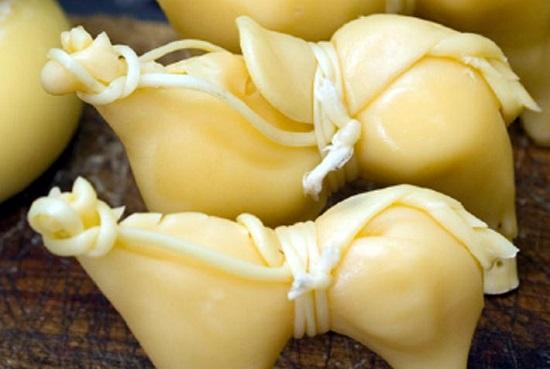




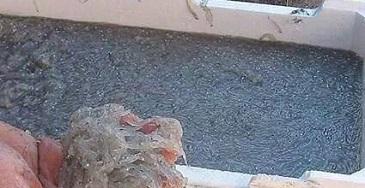
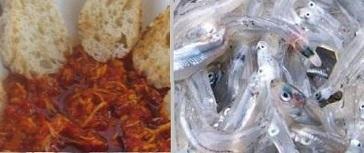

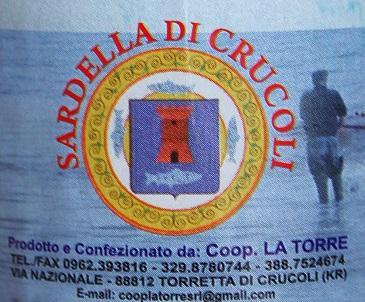


 It was also highly appreciated during the middle ages and the Renaissance, when it was considered to be a primary source of nutrition, and was an object of barter in the local economy, sold and exported by sea to Tunisia, Algeria and Greece.
It was also highly appreciated during the middle ages and the Renaissance, when it was considered to be a primary source of nutrition, and was an object of barter in the local economy, sold and exported by sea to Tunisia, Algeria and Greece.

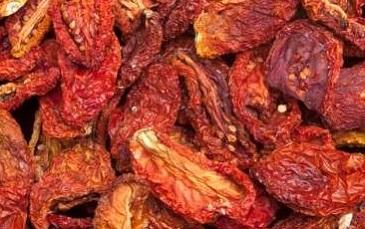
 largest producer of wild mushrooms, well-known and appreciated since the Roman emperors. It is picked in the forests of Sila, Pollino, Aspromonte.
largest producer of wild mushrooms, well-known and appreciated since the Roman emperors. It is picked in the forests of Sila, Pollino, Aspromonte.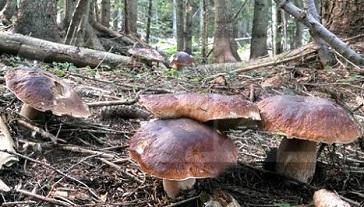
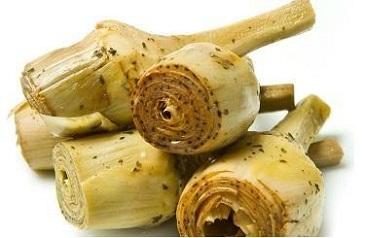
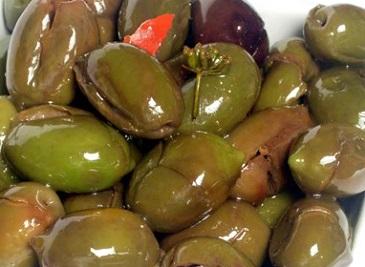
 Wild chicory in oil - Country people have always been great eaters of herbs growing spontaneously in fields.
Wild chicory in oil - Country people have always been great eaters of herbs growing spontaneously in fields.


 Calabrian's traditional sweets are often made using natural sweeteners such as honey, syrup of figs or mulled wine.
Calabrian's traditional sweets are often made using natural sweeteners such as honey, syrup of figs or mulled wine.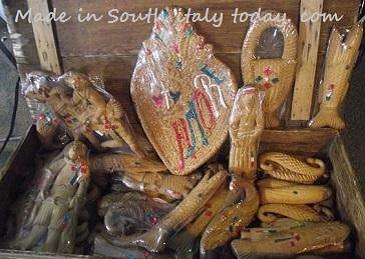
 the tradition of the Greek areas of Calabria, though they are made with variations by Reggio di Calabria confectioners.
the tradition of the Greek areas of Calabria, though they are made with variations by Reggio di Calabria confectioners.
